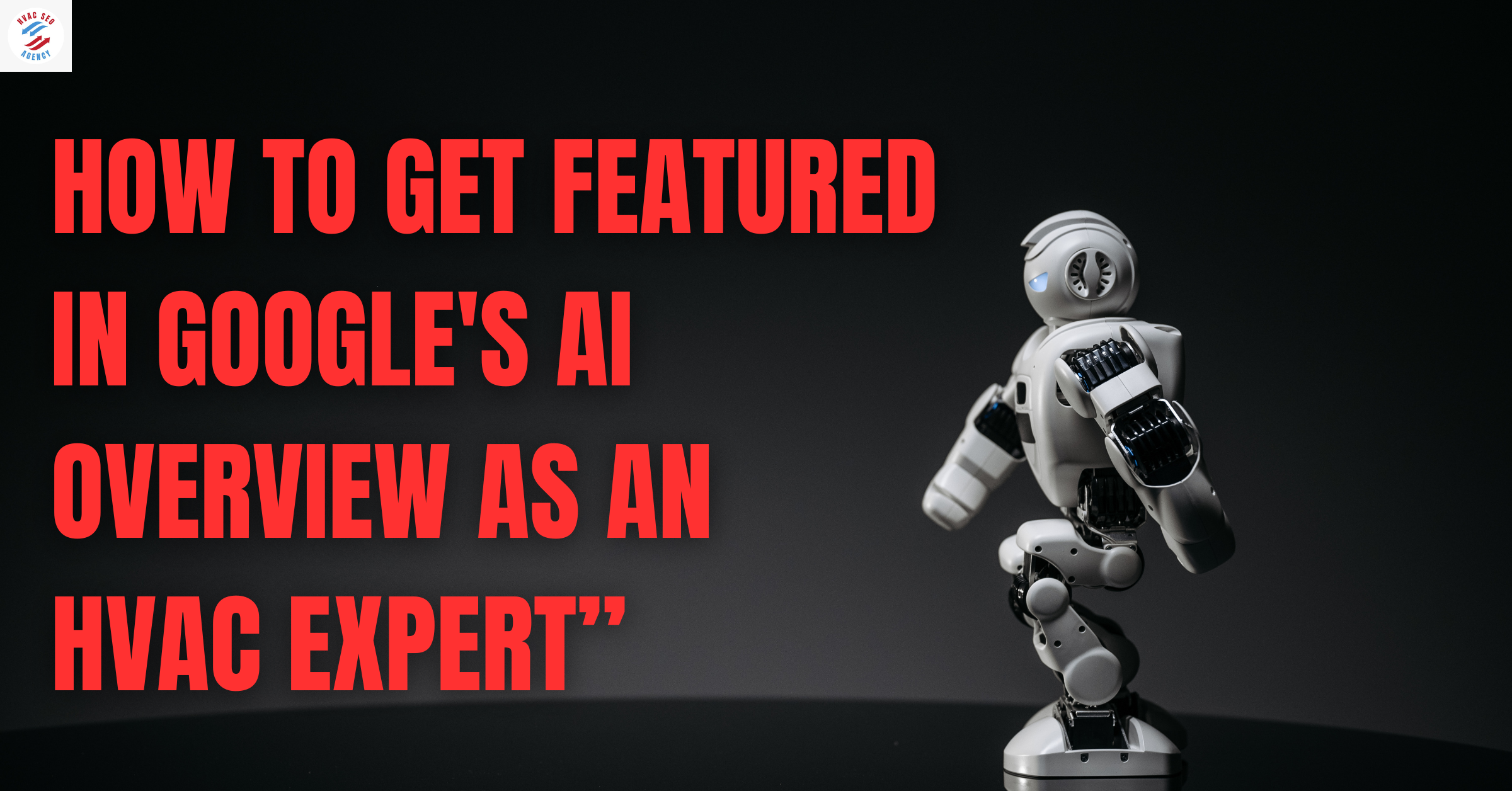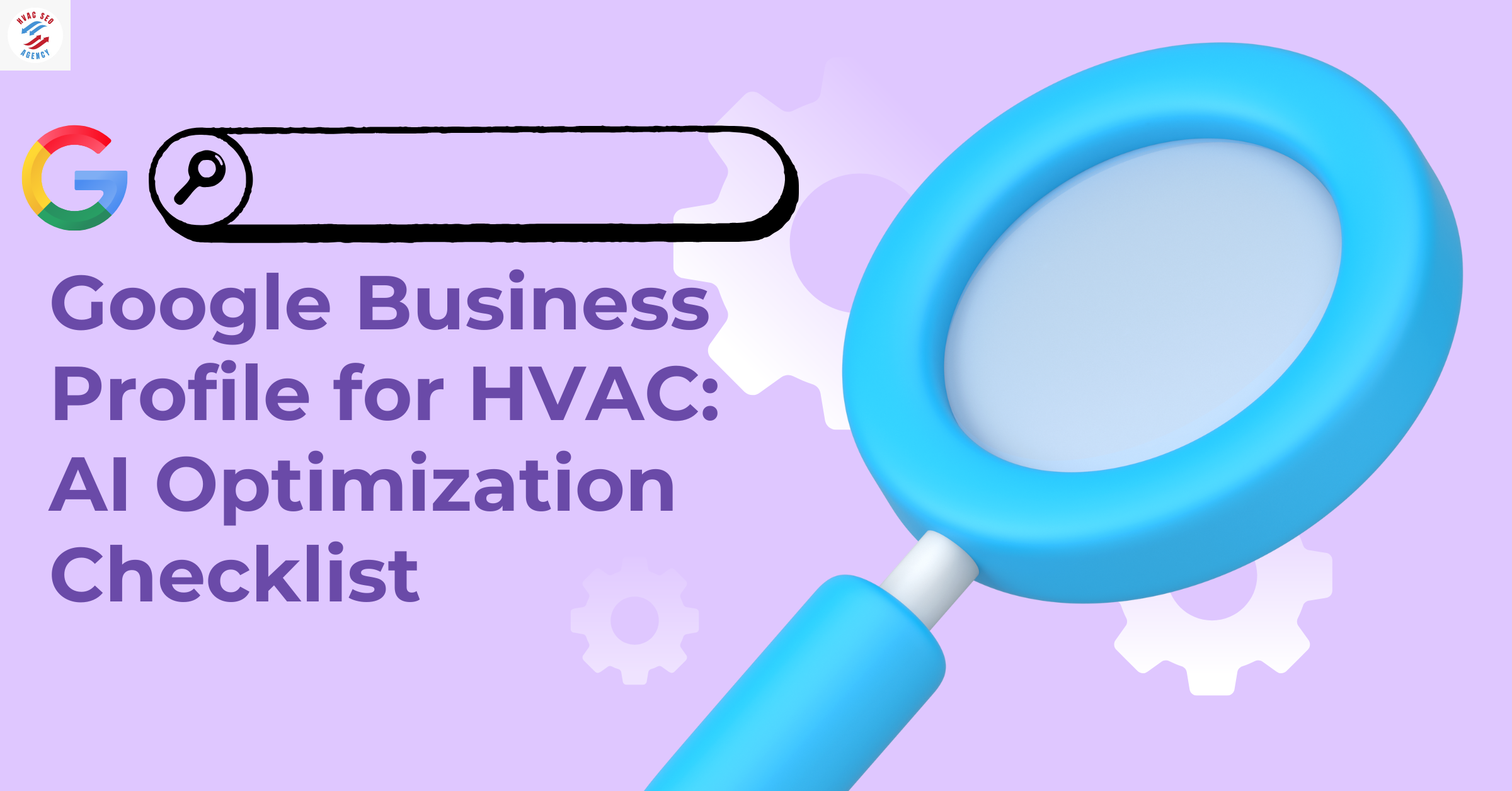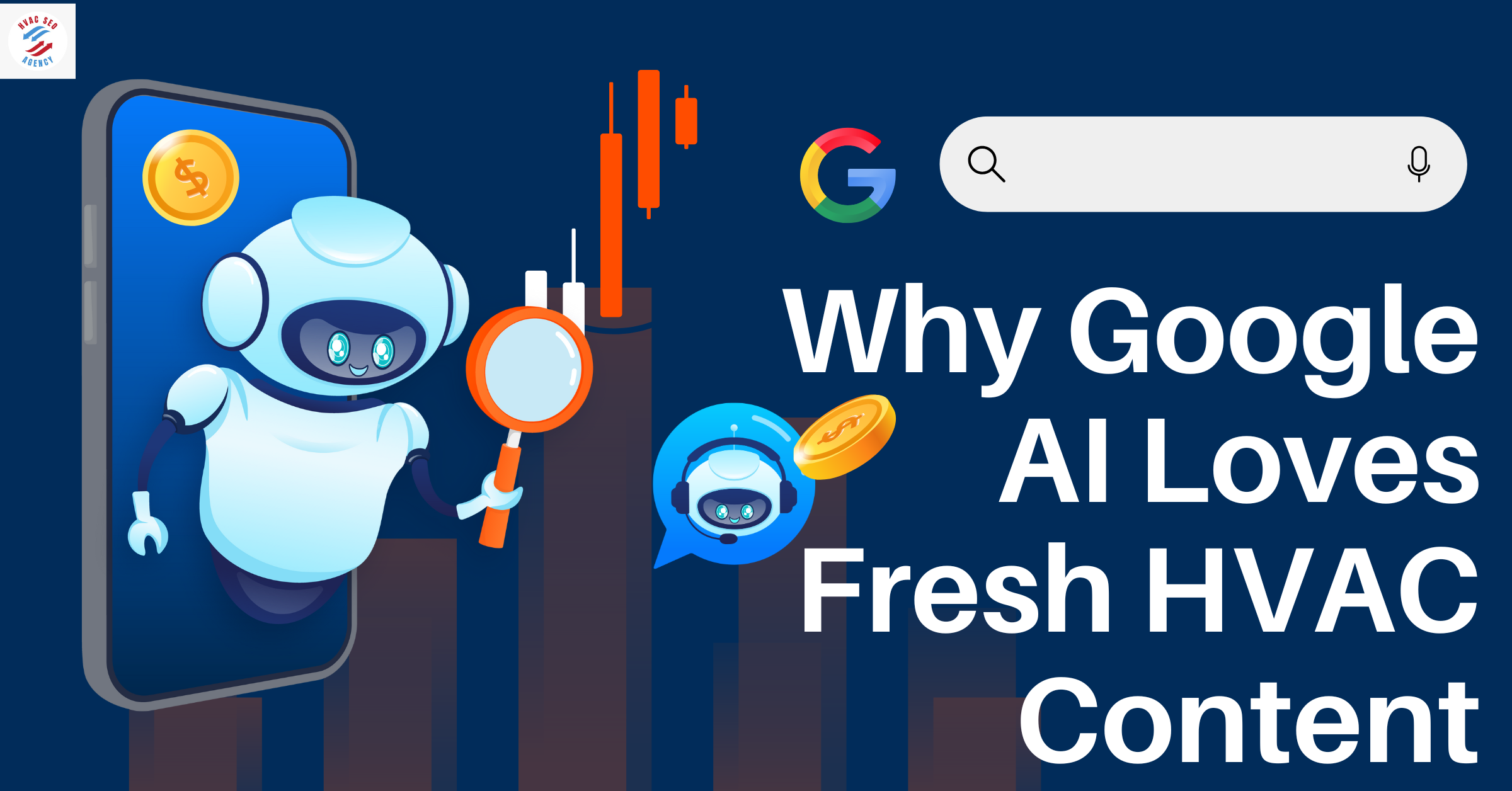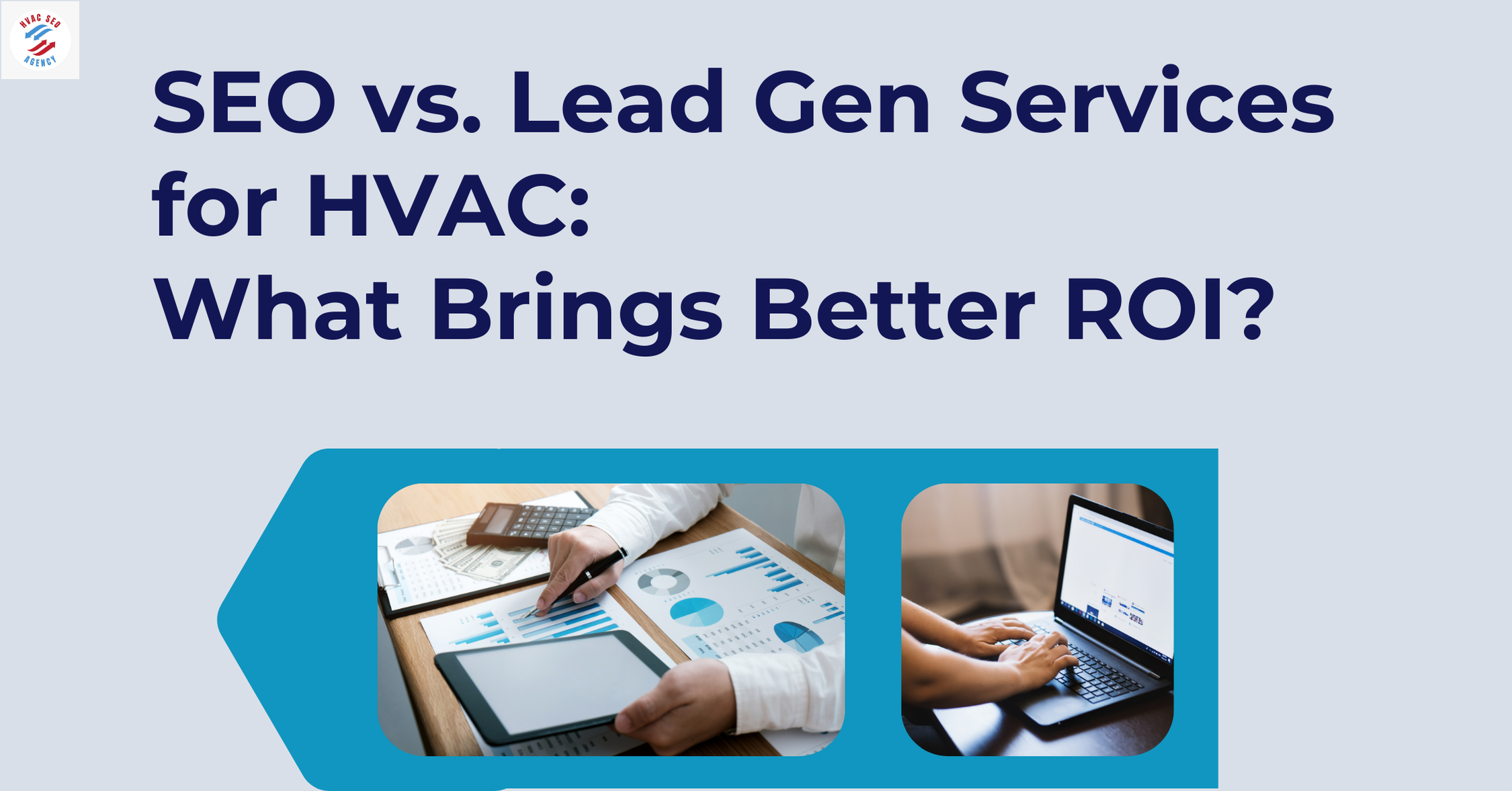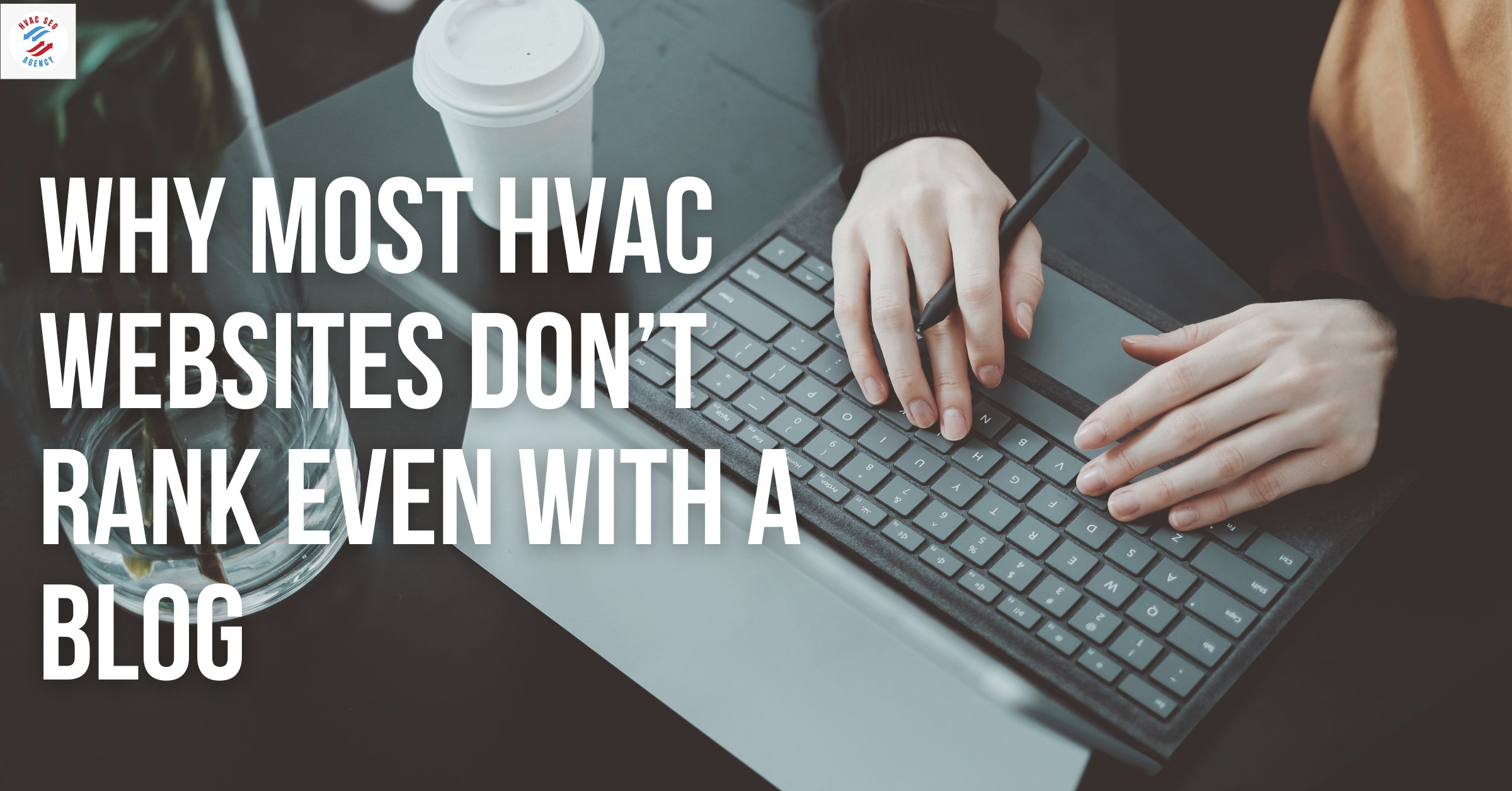Should Your HVAC Business Offer Plumbing Services? Pros & Cons
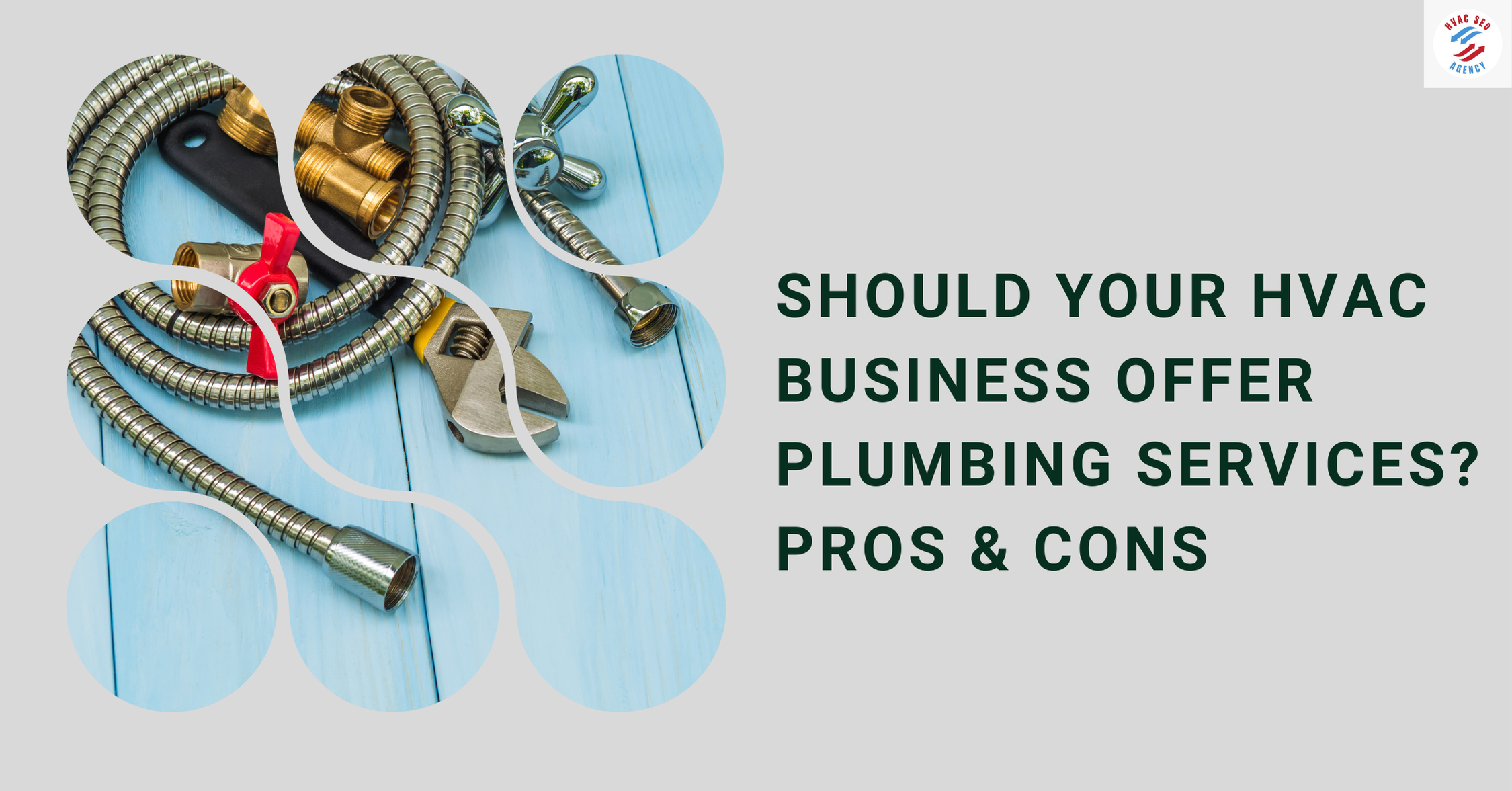
Section I: Evaluating the Integration of Plumbing Services into Your HVAC Business
The Heating, Ventilation, and Air Conditioning (HVAC) industry in the United States is experiencing significant growth, with the market size projected to reach USD 49.70 billion by 2030, expanding at a compound annual growth rate (CAGR) of 7.4% from 2024 to 2030. This expansion is driven by factors such as the increasing demand for energy-efficient equipment and advancements in technology.
In this dynamic landscape, HVAC business owners are continually exploring strategies to enhance their service offerings and maintain a competitive edge. One such strategy is diversifying into complementary services, notably plumbing. Integrating plumbing services can potentially unlock new revenue streams, improve customer retention, and provide a comprehensive solution to clients' needs.
However, the decision to expand into plumbing involves careful consideration of various factors, including market demand, operational challenges, and the competitive environment. Additionally, effectively marketing these expanded services is crucial to reach potential customers and maximize return on investment. Partnering with an HVAC SEO Agency can be instrumental in this regard.
For HVAC businesses in Columbus, collaborating with an Affordable HVAC SEO Agency in Columbus can enhance online visibility, attract targeted leads, and ultimately drive business growth. These agencies specialize in optimizing digital marketing strategies tailored to the HVAC and plumbing sectors, ensuring that your expanded service offerings reach the appropriate audience.
This blog aims to provide a comprehensive analysis of the pros and cons associated with adding plumbing services to your HVAC business. By examining industry trends, statistical data, and marketing strategies, we will equip you with the insights necessary to make informed decisions about diversifying your service portfolio.
Section II: Understanding the HVAC Industry Landscape
The HVAC sector forms the backbone of residential, commercial, and industrial climate control systems across the United States. As of 2024, the HVAC services market in the U.S. is valued at over $25 billion, with projections estimating it will exceed $35 billion by 2028, driven by increased urbanization, energy efficiency mandates, and smart home integration. According to the U.S. Bureau of Labor Statistics, employment for HVAC technicians is expected to grow 6% from 2022 to 2032, faster than the average for all occupations.
This growth opens up a unique window of opportunity for businesses aiming to scale. Many HVAC companies are realizing the benefits of strategic diversification—not only through product innovation but also by offering complementary services such as plumbing. This shift is especially appealing in states with aging infrastructure where HVAC and plumbing needs often overlap in residential and commercial retrofitting projects.
Yet, even as businesses look to expand, maintaining service quality within the core HVAC domain is non-negotiable. For instance, knowing How to Maintain Heat Exchangers for Peak HVAC Performance remains crucial. Efficient heat exchanger operation directly influences energy consumption, system longevity, and indoor air quality—key metrics that customers and regulators alike are scrutinizing more closely.
Table 1: U.S. HVAC Industry Snapshot (2024)
Graph 1: Projected U.S. HVAC Market Growth (2024–2028)
As this data suggests, HVAC businesses are well-positioned for growth. But sustained profitability requires a balance between optimizing current operations—like ensuring customers understand How to Maintain Heat Exchangers for Peak HVAC Performance—and exploring expansion avenues such as plumbing integration. In the next section, we’ll dive into the plumbing industry landscape to evaluate how it complements HVAC operations.
Section III: Exploring the Plumbing Industry and Its Synergy with HVAC
While HVAC businesses have traditionally focused on heating and cooling, the plumbing industry presents a lucrative opportunity for service expansion. According to IBISWorld, the U.S. plumbing industry generated over $130 billion in revenue in 2023, with more than 130,000 registered plumbing businesses and 570,000+ licensed plumbing professionals nationwide. This steady, essential service sector has shown resilience even during economic downturns due to the necessity of plumbing repairs and installations.
The plumbing and HVAC industries share more than just similar customer bases—they often intersect in home and commercial infrastructure. Whether it's installing water heaters, managing piping for boilers, or integrating hydronic heating systems, the overlap offers HVAC businesses a seamless path to diversification.
Moreover, plumbing services can help stabilize revenue throughout the year, especially during off-peak HVAC seasons. This synergy gives companies a compelling case to bundle services, attract long-term maintenance contracts, and improve customer retention through convenience and value.
However, scaling both plumbing and HVAC operations requires a thoughtful growth strategy. One proven approach is to Franchise Your HVAC Business for Growth. By adopting a franchise model, business owners can extend their brand into new territories while minimizing direct operational costs. Franchising also offers the ability to standardize service delivery and training, ensuring that whether you're installing a new AC system or handling a water main repair, customers receive a consistent experience.
Table 2: Plumbing Industry Overview (2023)
Graph 2: U.S. Plumbing Industry Revenue (2019–2023)
As HVAC business owners look beyond seasonal constraints and rising competition, branching into plumbing—and even choosing to Franchise Your HVAC Business for Growth—can unlock new revenue channels, reduce operational risk, and significantly increase enterprise value. In the next section, we’ll break down the exact benefits and challenges of adding plumbing services to your HVAC offering.
Section IV: The Power of Diversification – Why It’s Time to Expand Your HVAC Business to New Locations
Diversification isn’t just about adding new services—it’s about strategically positioning your HVAC business to thrive across markets and seasons. With rising competition and shifting customer expectations, more HVAC companies are embracing expansion not only through new service lines like plumbing, but also geographically. The decision to Expand Your HVAC Business to New Locations can create multiple revenue streams, spread operational risks, and establish regional brand dominance.
According to the U.S. Small Business Administration (SBA), 70% of home service businesses that expand into multiple service areas within five years of operation report a 35%+ increase in net profits. For HVAC businesses, expanding into nearby towns or underserved metro regions offers an opportunity to meet demand where service is inconsistent or monopolized by outdated providers.
The overlap between plumbing and HVAC services amplifies the case for multi-location growth. When you add plumbing capabilities and replicate them in a new city, you’re not just expanding—you’re creating a full-spectrum home services brand. This move appeals to homeowners seeking bundled services and to property managers preferring fewer vendor contracts.
Table 3: Financial Impact of Regional HVAC Expansion (Based on Industry Survey)
Graph 3: Profit Growth After Expanding to Multiple Locations (Year-Over-Year)
Franchising and multi-location setups not only increase your brand footprint but also provide an operational buffer. If one location is affected by seasonality, another might be at peak demand. The key to success here lies in data-driven market analysis, consistent service delivery, and powerful digital visibility.
This is where partnering with a professional HVAC SEO Agency becomes essential. They can help tailor hyper-local SEO campaigns for each location, ensuring your services are found by homeowners and businesses exactly where you’re expanding.
Section V: Key Advantages of Adding Plumbing Services to Your HVAC Business
Adding plumbing to your service portfolio can transform your HVAC operation from a seasonal business into a full-fledged, year-round home services provider. This strategic move not only diversifies revenue but also improves customer experience, increases ticket value, and strengthens your market position. Here’s a breakdown of the core benefits of integrating plumbing into your HVAC company.
1. Year-Round Revenue Stability
HVAC demand typically spikes in the summer and winter, with slower periods during spring and fall. Plumbing services, however, remain in demand year-round due to constant issues like leaks, pipe failures, water heater maintenance, and fixture installations. This balance allows you to stabilize cash flow and reduce employee turnover during the off-season.
2. Increased Customer Retention and Cross-Selling Opportunities
A customer who trusts your HVAC work is more likely to hire you for plumbing services—and vice versa. Cross-selling becomes easier when both services are offered under one brand. Maintenance plans, seasonal promotions, and bundled service discounts can all increase customer lifetime value significantly.
3. Improved Operational Efficiency and Shared Resources
Many tools, service vehicles, and dispatch operations can be shared across HVAC and plumbing teams. This synergy improves scheduling, reduces administrative overhead, and optimizes technician productivity. With well-structured training programs, even your staff can be cross-skilled to handle overlapping tasks, such as water heater replacements or hydronic heating systems.
4. Competitive Edge in Local Markets
In crowded HVAC markets, having an expanded service line helps you stand out. Customers increasingly prefer dealing with a single, trusted provider for all their home system needs. Offering both HVAC and plumbing builds your reputation as a comprehensive solution provider and positions your company as a one-stop-shop.
5. Better Marketing ROI and SEO Performance
Combining HVAC and plumbing keywords in your digital marketing allows for a broader content strategy and increased search engine visibility. An experienced HVAC SEO Agency can craft a unified campaign targeting both services, improving ad conversion rates and organic reach. When users search for emergency plumbing or HVAC repair, your integrated brand appears more credible and convenient.
Table 4: Impact of Adding Plumbing Services to HVAC Operations
Graph 4: Revenue Growth After Adding Plumbing Services (Over 12 Months)
Section VI: Challenges and Risks of Expanding into Plumbing Services
While the benefits of diversifying your HVAC business into plumbing are compelling, the transition isn’t without its challenges. Understanding the operational, financial, and compliance-related risks is critical before launching plumbing services under your HVAC brand. Scaling without preparation can lead to legal penalties, loss of brand reputation, and negative returns on investment.
Here are the most common hurdles HVAC businesses face when expanding into plumbing—and how to navigate them strategically.
1. Licensing and Regulatory Compliance
Plumbing is a heavily regulated trade in most U.S. states. Unlike HVAC licenses, plumbing licenses often require apprenticeships, hours of on-site experience, and state-specific exams. If your team doesn’t meet these credentials, you’ll need to hire licensed plumbers or partner with subcontractors—both of which carry liability considerations.
Tip: Consult your state licensing board and legal counsel before launching. Also, ensure that your liability insurance covers plumbing services.
2. High Startup and Training Costs
Adding plumbing requires purchasing new tools (pipe cutters, augers, inspection cameras), expanding your service fleet, retraining staff, and possibly building out a new dispatch process. On average, launching a small plumbing division may cost between $40,000–$100,000, depending on your location and scale.
Tip: Start small with basic plumbing services (e.g., water heater installs, drain cleaning) and scale as revenue grows. Use profits from your HVAC services to finance this phased growth.
3. Operational Complexity
Managing two specialized teams—HVAC techs and plumbers—can complicate scheduling, quality control, and inventory management. If not tightly coordinated, this can result in double bookings, supply shortages, or even job site conflicts.
Tip: Invest in service management software that supports multi-trade scheduling and inventory visibility. Create SOPs for cross-trade communication.
4. Branding and Reputation Risks
Adding plumbing might confuse or alienate loyal HVAC customers if not marketed correctly. Customers expect expertise, and if plumbing services are poorly executed, it could harm your HVAC reputation too.
Tip: Use separate web pages and service divisions under one brand umbrella. Highlight plumbing expertise, certifications, and technician bios to build trust.
5. Slower ROI in Competitive Markets
In areas where large plumbing franchises dominate, it may take longer to generate profit. Without a clear value proposition or aggressive digital marketing, your new services may go unnoticed.
Tip: Work with an experienced HVAC SEO Agency that understands how to target both HVAC and plumbing keywords in your area. An Affordable HVAC SEO Agency in Dallas , for example, can help local businesses rank competitively in dual-service categories.
Table 5: Common Risks of Adding Plumbing & Mitigation Strategies
Graph 5: Cost Breakdown for Launching Plumbing Services (Estimated $75K Total)
Section VII: Real-World Case Studies – HVAC Businesses That Successfully Added Plumbing Services
To understand the potential of diversification, it's crucial to learn from those who've already taken the leap. Across the U.S., numerous HVAC companies have added plumbing services and seen impressive growth in revenue, customer loyalty, and geographic reach. This section highlights three such businesses, focusing on what worked, what challenges they overcame, and how strategies like partnering with an HVAC SEO Agency accelerated their success.
Case Study 1: Cool Tech Heating & Air – Austin, TX
Background: A mid-sized HVAC firm established in 2005, specializing in residential A/C installations and maintenance.
Expansion: Added plumbing services in 2021.
Strategy:
Hired two licensed plumbers full-time.
Started with water heater installations and basic pipe repairs.
Partnered with a local HVAC SEO Agency to build a dedicated plumbing page.
Rebranded to "Cool Tech Home Services."
Results (within 12 months):
Revenue increased by 38%, from $2.1M to $2.9M.
Plumbing made up 27% of monthly service calls.
Google My Business views jumped from 8,000 to 14,500/month.
Case Study 2: Climate Max Solutions – Denver, CO
Background: Commercial HVAC service provider focused on large office buildings and retail centers.
Expansion: Launched a plumbing division in 2020 to cover tenant water systems and restrooms.
Strategy:
Outsourced plumbing services at first to test demand.
Created bundled HVAC + Plumbing contracts.
Worked with an Affordable HVAC SEO Agency in Columbus for a multi-location SEO blueprint.
Results (within 18 months):
Landed three major property management contracts worth over $800K/year.
HVAC job conversions increased by 22% due to bundled packages.
Expanded from 1 to 3 metro service areas.
Case Study 3: Air Pro Heating & Cooling – Columbus, OH
Background: Family-owned HVAC company with a loyal residential base and heavy referral traffic.
Expansion: Added plumbing in 2022 after noticing repeated customer requests.
Strategy:
Partnered with a veteran plumber as a co-investor.
Used customer email lists to promote plumbing maintenance plans.
Relied on local SEO—targeting “plumbing repair Columbus” and “furnace + water heater installs.”
Results (within 9 months):
Increased monthly leads by 65%.
Customer lifetime value rose by 42%.
Website traffic doubled after integrating HVAC and plumbing SEO content.
Table 6: Diversification Outcomes for Real HVAC Businesses
Graph 6: Revenue Increase Post-Diversification – Case Study Comparison
These real-world examples show that when executed with a clear plan, proper hiring, and digital marketing support from a skilled HVAC SEO Agency, expanding into plumbing can produce strong, measurable returns. Next, we’ll dive into the actual data trends shaping the HVAC and plumbing service landscape so you can benchmark your growth potential.
Section VIII: Industry-Wide Data – The Real Impact of Diversification on HVAC Businesses
While case studies provide proof of concept, broader industry data helps quantify the average gains and risks associated with adding plumbing services to an HVAC business. In this section, we’ll explore nationwide statistics, surveys, and trends that reveal how diversification influences business performance—from revenue growth and customer retention to search engine visibility and hiring demands.
These insights are drawn from recent reports by the U.S. Chamber of Commerce, HomeAdvisor, IBISWorld, and HVAC-specific industry surveys conducted in late 2023.
1. Revenue Growth Across Diversified HVAC Firms
According to a 2023 Home Services Business Benchmarking Report, HVAC companies that also offered plumbing services saw an average revenue increase of 31% within 12–18 months of diversification. This number was even higher—41%—for companies that operated in 2+ metro locations.
2. Customer Retention & Lifetime Value
Data from ServiceTitan and NICE Job shows that customers are 2.4x more likely to rehire a home services provider that offers both HVAC and plumbing under one brand. These companies also reported a 29% higher customer lifetime value due to cross-service subscriptions and bundled annual maintenance plans.
3. Google Rankings and SEO Visibility
Diversified businesses that hired a specialized HVAC SEO Agency saw their local search visibility increase by 46% on average, especially when they created separate service pages for plumbing. Those working with an Affordable HVAC SEO Agency in Atlanta, for example, ranked in the top 3 search results for over 15 local service keywords within 6 months.
4. Hiring Challenges and Labor Market Trends
Despite the opportunities, 63% of HVAC business owners who expanded into plumbing cited “difficulty hiring licensed plumbers” as their top concern, according to a 2023 survey by the U.S. Small Business Administration. Labor shortages in skilled trades remain a critical challenge for multi-service growth.
Table 7: Statistical Comparison – Diversified vs. Non-Diversified HVAC Businesses
Graph 7: Revenue, Retention, and SEO Growth – Diversified vs. Non-Diversified Businesses
As the data shows, HVAC businesses that diversify into plumbing tend to outperform those that don’t across financial, digital, and operational benchmarks. But success isn’t automatic. It depends heavily on smart planning, consistent service delivery, and a robust SEO strategy crafted by professionals who understand the unique needs of dual-service providers.
Section IX: Step-by-Step Guide to Successfully Diversify Your HVAC Business
Expanding your HVAC business into plumbing services can yield significant rewards but only if executed with a solid, data-driven strategy. In this section, we provide a practical roadmap that outlines the essential steps to help you launch, market, and manage your new plumbing division while minimizing risks and maximizing ROI.
Step 1: Conduct Market Feasibility Research
Before launching plumbing services, evaluate your local market. Use tools like Google Trends, HomeAdvisor Demand Reports, and Yelp data to analyze:
Search volume for plumbing services in your service area
Local competition and pricing benchmarks
Demand for related services like water heaters and pipe replacements
If you’re planning to Expand Your HVAC Business to New Locations, conduct separate market feasibility studies for each region. Prioritize areas underserved by full-service HVAC and plumbing providers.
Step 2: Understand Licensing Requirements
Every state has its own plumbing licensure standards. These often include:
A journeyman or master plumber license
Mandatory training hours (typically 4,000–8,000 hours)
State exams and background checks
Visit your state’s contractor licensing board website or consult a legal expert to ensure full compliance. Failing to meet requirements can lead to penalties or revoked business licenses.
Step 3: Develop a Staffing & Training Plan
Decide whether you’ll:
Hire licensed plumbers directly
Partner with subcontractors
Cross-train your existing HVAC team (if licensed)
Also, plan for continued training to meet evolving code standards. Offering benefits and competitive wages will help you attract skilled professionals, especially in tight labor markets.
Step 4: Acquire Equipment and Tools
Plumbing requires specialized tools, such as:
Pipe inspection cameras
Drain augers
Pipe cutters and threaders
Water pressure gauges
Use your feasibility study to estimate tool investment. Start with essential services, then expand your toolset as revenue grows.
Step 5: Rebrand and Bundle Services
When integrating plumbing into your HVAC business, update branding assets to reflect the expanded offerings. For example:
Update your logo and tagline
Create a plumbing-specific service page
Bundle HVAC and plumbing maintenance plans to increase average ticket value
Make sure your brand conveys professionalism in both trades to maintain customer trust.
Step 6: Launch a Targeted Marketing Campaign
Digital visibility will determine the success of your expansion. Work with an experienced HVAC SEO Agency to:
Optimize separate landing pages for HVAC and plumbing services
Run geo-targeted Google Ads
Launch reputation management campaigns to build reviews in the plumbing category
If you're based in Ohio, an Affordable HVAC SEO Agency in Chicago can help you dominate search rankings for both services locally.
Step 7: Track Key Metrics and Adjust
Once your plumbing services are live, measure performance monthly using metrics like:
Service call volume
Conversion rates by service type
Customer satisfaction (NPS scores and reviews)
ROI on marketing spend
Revenue per job
Use these KPIs to fine-tune operations, adjust staffing, or expand your plumbing service menu.
Graph 8: Diversification Timeline – From Planning to Profit (12-Month Plan
Expanding your HVAC company into plumbing is only profitable if customers can find your services. Whether you're launching a new division or entering a new market, digital visibility is critical—and that’s where a professional HVAC SEO Agency makes all the difference.
This section explains exactly how HVAC and plumbing businesses benefit from expert SEO strategies, including keyword targeting, local optimization, and conversion-focused content. It also shows why working with an Affordable HVAC SEO Agency in Columbus or your local market can maximize ROI and speed up your path to profitability.
1. Ranking for Dual-Service Keywords
When you add plumbing services, you open the door to hundreds of new keyword opportunities. A strong HVAC SEO Agency will help you rank for both HVAC and plumbing-related searches like:
“HVAC repair + water heater installation near me”
“Air conditioning and drain cleaning services”
“Furnace and sump pump replacement Columbus”
This multi-keyword targeting improves your visibility in Google’s local pack and organic results, allowing you to outcompete single-service providers.
2. Hyperlocal SEO Optimization
Ranking high in Google’s map pack requires more than keywords—it demands local authority. An HVAC SEO Agency will optimize:
Your Google Business Profile for both HVAC and plumbing categories
Local citations (Yelp, Angi, BBB)
Location-specific service pages (e.g., “Emergency Plumbing in Columbus”)
For multi-location businesses, they’ll ensure each branch has its own optimized landing page and local backlink profile.
3. Website Restructure and Conversion Optimization
When you diversify your offerings, your website must clearly reflect that change. A professional HVAC SEO Agency will:
Add dedicated plumbing service pages with strong CTAs
Integrate online booking tools for both services
Improve page load speeds and mobile responsiveness
Funnel users to the correct service (HVAC vs. plumbing) to increase conversion rates
This structure boosts both SEO rankings and user engagement.
4. Paid Ads and Retargeting for Fast Lead Generation
SEO is powerful for long-term traffic, but PPC (Google Ads) drives fast results. Your SEO agency can manage HVAC and plumbing ad campaigns simultaneously, ensuring:
Geo-targeted ad delivery for new locations
Separate ad copy and landing pages per service
Retargeting users who visited your site but didn’t convert
Combining organic and paid strategies boosts visibility across all search touchpoints.
5. Review Building and Online Reputation Management
Plumbing and HVAC are trust-based services. An agency will implement automated review generation tools, making it easy for satisfied customers to leave 5-star reviews on Google, Yelp, and industry directories.
This boosts local SEO, builds brand authority, and increases customer trust—especially for a new service line like plumbing.
Table 8: Key SEO Services & Their Impact on HVAC + Plumbing Growth
Graph 9: SEO-Driven Revenue Growth – 12-Month Performance (HVAC + Plumbing)
Whether you’re just starting to diversify or already running a multi-service company, an HVAC SEO Agency gives you the visibility, authority, and targeting needed to dominate your market. If you're in a competitive location like Ohio, working with an Affordable HVAC SEO Agency in Columbus ensures every dollar spent drives measurable growth.
FAQs
Q1: Is it profitable to add plumbing services to an HVAC business?
Yes. Most HVAC businesses that diversify into plumbing see a 25–40% increase in annual revenue within the first 12–18 months. Plumbing also provides year-round income, offsetting seasonal HVAC slowdowns.
Q2: Do I need a separate license to offer plumbing services?
Yes. Plumbing is heavily regulated in most states. You’ll typically need a licensed journeyman or master plumber on staff, plus state-specific insurance and compliance documentation. Always check with your state’s contractor licensing board.
Q3: What services should I start with when adding plumbing?
Begin with high-demand, high-margin services like water heater installation, leak repair, and drain cleaning. These services require relatively lower upfront investment and integrate well with HVAC jobs.
Q4: How can I promote both HVAC and plumbing services online?
Work with a specialized HVAC SEO Agency to create dedicated service pages, optimize Google Business Profiles, and launch PPC campaigns. An Affordable HVAC SEO Agency in Columbus can help you build dual-service visibility locally and expand regionally.
Q5: Should I rebrand my business after adding plumbing?
Yes, in most cases. Rebranding from “HVAC-only” to a broader identity like “Home Services” can help attract a wider customer base and better reflect your diversified offerings. Just be sure to retain the trust and reputation your original brand holds.
Q6: What are the common mistakes to avoid?
Expanding without proper plumbing licenses
Poor technician onboarding or under trained staff
Failing to optimize your website for both services
Ignoring local SEO and online reviews
Scaling too quickly without a clear operational strategy
Conclusion: Should Your HVAC Business Offer Plumbing Services?
Diversifying into plumbing is one of the smartest moves an HVAC business can make in today’s service economy. With strong market demand, significant revenue upside, and overlapping infrastructure needs, plumbing complements HVAC perfectly—both operationally and financially.
However, this expansion isn’t plug-and-play. You’ll need to address licensing, training, branding, and marketing with precision. The most successful businesses are those that Expand Your HVAC Business to New Locations, adopt scalable systems, and invest in expert marketing through a trusted HVAC SEO Agency.
If you’re ready to grow, consider partnering with an Affordable HVAC SEO Agency in Columbus or your local market to launch plumbing services that not only attract leads—but convert them into long-term, loyal customers.
Bottom line: The HVAC and plumbing combo is no longer a luxury—it’s a competitive necessity. If your goal is to dominate your service area, secure year-round revenue, and future-proof your business, adding plumbing services isn’t just a good idea—it’s the next step forward.


